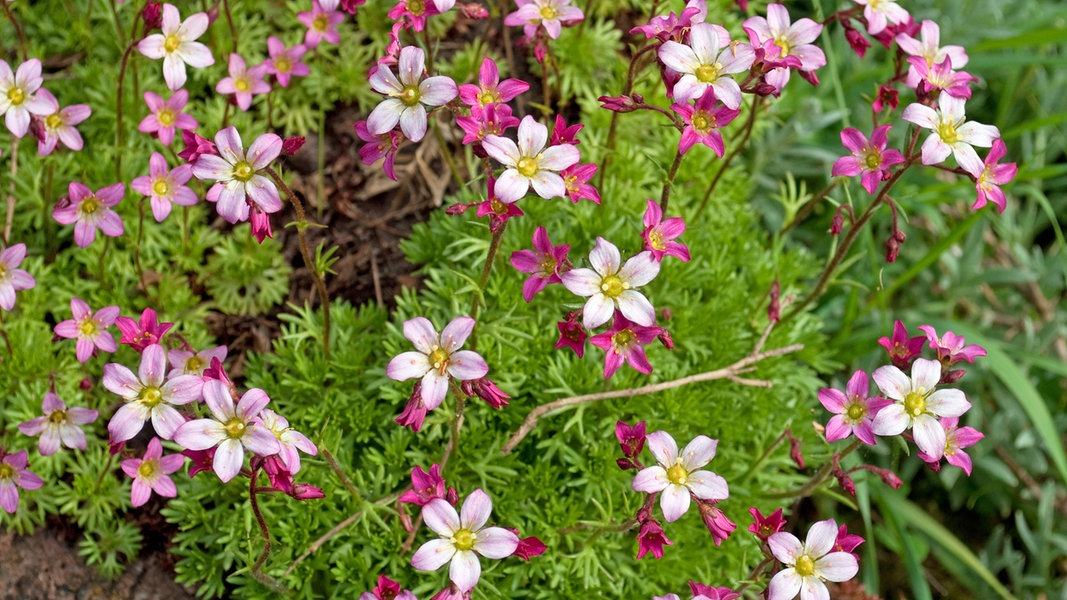As of: March 13, 2024 10:33 a.m
In spring the first perennials begin to bloom and require care and fertilizer. New flowers can also be planted – for example saxifrage, blue cushions or violets.
Finally a splash of color in the bed and on the balcony again: If you want to renew the planting in beds, pots or the rock garden, you can buy and plant new plants from March, provided the ground is frost-free. Spring is also a good time to replan a perennial bed or plant a prairie garden.
Choose the right location for perennials
When purchasing, make sure that the plant has strong, firm roots. You should also take into account your requirements for light and soil as well as the height of growth – after all, the new perennials should fit harmoniously into the overall picture and have ideal growing conditions.
Inventory in the perennial bed: Are the plants healthy?
If you have already created a perennial bed, you should take stock in the spring and check whether all the plants got through the winter well. This is not easy to recognize with all perennials: plants that sprout early, such as irises, imperial crowns and wild garlic, can be clearly seen as early as March as to whether they are healthy. Late-flowering perennials such as autumn anemones, asters and some cranesbill species, however, usually sprout later and only really start to grow in May. So don’t judge too early and give the perennials until mid-May.
Pruning perennials in spring
Spring is a good time to prune many plants – including subshrubs such as lavender.
If there is still a thin layer of leaves covering the perennial bed, it can remain there. On the one hand, microorganisms break them down into fertilizer. On the other hand, the leaves serve as protection against soil compaction and drying out and form a natural mulch layer that keeps wild herbs away. Over the course of spring, the perennials outgrow the foliage layer. If you haven’t already done so in the fall, cut back the perennials – including the ornamental grasses – and remove weeds. Lavender also needs a strong pruning shortly before sprouting.
Loosening the soil in perennial beds is controversial. On the one hand, the soil should be loose and not compacted. On the other hand, many fine roots of the perennials are injured when cultivating the beds. This means reduced, stunted growth and the plants are more susceptible to diseases and pests.
Rejuvenate perennials by dividing them
Dividing rejuvenates perennials.
Existing perennials can be divided and propagated and rejuvenated in this way. This is particularly useful for older perennials. Often they no longer bloom profusely and become bare from the inside. After dividing, they can be replanted elsewhere in the bed or in pots. The best time for this is shortly before budding. However, perennials that bloom in spring are best divided in autumn.
Strong growth through organic fertilizer
The first fertilization of the perennial bed should also take place in spring. Organic fertilizers such as compost, horn shavings, bone and blood meal are suitable for this. They stimulate the soil to release nutrients for a relatively long time. Mineral fertilizers such as blue grain are less recommended. They cause plants to grow so quickly that they often become unstable and fall over. In addition, these fertilizers increase the water requirements of the plants extremely, meaning that they have to be watered very frequently.
Further information
If you carefully plan the planting of your bed, you can enjoy wonderfully flowering plants almost all year round. more
Flowering perennials make it tempting to plant haphazardly. But designing the bed requires a little planning. more
Which perennial loves sun and which partial shade? What is suitable for dry soils? An overview with examples. more
Many plants need a climbing aid or support in order to grow vigorously. What are the options? more
This topic in the program:
NDR 1 Lower Saxony | Garden podcast: All carrots, or what?! | April 27, 2022 | 7:05 p.m
